ITU-R
Adopts ISDB-TSB as Draft Recommendation
-International standardization of Japanese digital
terrestrial sound broadcasting system-
Masayuki TAKADA,
Digital Broadcasting
Networks |
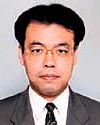 |
ITU-R Study Group 6 (SG6) meetings were held from September 13 to 25,
2000, in Geneva, Switzerland. The SG6 meeting approved the ISDB-TSB
(Integrated services Digital Broadcasting for Terrestrial Sound Broadcasting)
digital terrestrial sound broadcasting system proposed by Japan as the
ITU-R draft recommendation.
The International Telecommunication Union (ITU) is a special United
Nations organization established to promote the global standardization
of telecommunications. The SG6 of the ITU Radiocommunication Sector
(ITU-R), which contains 7 Working Parties (WPs), is in charge of the
international standardization of broadcasting services. Each working
party specializes in examining a specific field such as broadcasting
systems/production, digital coding, multimedia, terrestrial broadcasting,
and satellite broadcasting.
Digital terrestrial sound broadcasting ISDB-TSB
, which has commonality with the ISDB-T digital terrestrial television
broadcasting system, was developed in Japan. The transmission parameters
are shown in the table below. This system adopts the OFDM modulation
scheme, a high-efficiency audio compression coding scheme and a time
interleaving technique to ensure good performance in mobile reception.
ISDB-TSB was proposed to the ITU-R to be recommended
for international use. The SG6 approved it as a draft recommendation
because ISDB-TSB is a sufficiently flexible transmission
scheme for use in various receiving conditions. In addition, it has
been shown to achieve superb performance through numerous experiments.
It is now scheduled to be officially recommended by the ITU Member States.
| ISDB-TSB transmission parameters
|
| Transmission bandwidth |
 |
430kHz/1.3MHz |
| Moduletion |
 |
Segmented OFDM |
| Carrier Modulation |
 |
DQPSK,QPSK,16QAM,64QAM |
| Error correction |
 |
Convolutional code and Reed-Solomon code
|
| Multiplexing |
 |
MPEG-2 Systems |
| Audio coding |
 |
MPEG-2 AAC |
| The 2nd NHK-KBS* Digital Group Meeting
|
The 2nd NHK-KBS Digital Study Society meeting was held at the NHK
Science & Technical Research Laboratories on October 25, 2000.
This society is responsible for digital broadcasting technology
information sharing between NHK and KBS.
Four engineers who handle the development of digital broadcasting
at KBS participated in the meeting. NHK and KBS each gave three
presentations, and a lively discussion ensued. With regard to data
broadcasting, KBS presented the concept of equipping a TV with the
functions of a personal computer, with the establishment of a project
named iPCTV. It also reported that program production making good
use of CG was being carried out.
NHK gave a report regarding ISDB-S (satellite), ISDB-T (terrestrial),
ISDB-C (cable), and a digital production information system for
efficient program production. NHK also presented demonstrations
of a coupling canceller, which is important in digital terrestrial
broadcasting, and of digital satellite data broadcasting.
| *KBS: |
Korean Broadcasting System, a special corporation
funded by the South Korean government. |
| (Toshiyuki MATSUI, Planning & Coordination)
|
|
| The 37th ABU General Assembly and Engineering
Committee |
|
Between November 2 and November 11, 2000, the ABU General Assembly
and Committee Meetings were held in Manila, Philippines. President
EBISAWA of NHK, who is the president of ABU, served as the chairman
of the assembly, and made the following address:
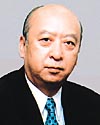 Address
of President EBISAWA Address
of President EBISAWA
With the 21st century around the corner, the world of broadcasting
has entered into a significant era of revolution, accompanied
by the advance of digitization. In Japan, BS satellite broadcasting
will start digital services on December 1, 2000. These will enrich
broadcasting services by providing high quality picture and sound
in Hi-Vision, and interactive data broadcasting.
While the digitization of broadcasting will provide a big business
opportunity to related industries, I believe that we should never
forget that, at the same time, broadcasting creates culture based
on technology. Technology gains its true value when used to enrich
people's hearts and minds. We hope to contribute to the coexistence
of a comfortable society and an energetic economy, by positively
integrating technological reform accomplishments with broadcasting.
The digital divide in the advance of digitization has been pointed
out. The rectification of this situation has become a global concern.
We believe that it is a basic mission of broadcasting to allow
people equal information access regardless of their abilities,
income, or educational background. As for NHK, looking toward
the realization of more human-friendly broadcasting, technology
is being developed to produce automatic closed-captioning for
the hearing-impaired, and to convert the speech rate of TV and
radio broadcasting into slower speeds for the elderly. Such technological
developments are the challenges we are tackling to eliminate the
digital divide.
Through discussions on occasions such as the ABU General Assembly,
we are determined to make our best efforts to overcome these problems.
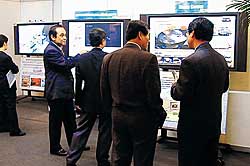 Engineering
Committee Engineering
Committee
In the Engineering Committee, Senior Research Engineer Mr. MORIYAMA
of the STRL, who was selected as a Topic Chairman of Transmission
Technology, presented reports regarding worldwide digital terrestrial,
data, and Internet broadcasting, etc. The present situations of
broadcasters in each country were also reported, and information
concerning the latest broadcasting technologies was exchanged.
NHK reported on the status of various projects, including ISDB-S,
ISDB-T, ISDB-C, Hi-Vision Drama CG composi tion, and the news
speech transcription system for broadcasting. In a guest lecture,
Mr. KATO of the STRL talked about a television home server for
the digital broadcasting services of TV anytime.
At the Asia Multimedia and Broadcast Show 2000, which was held
together with the General Assembly, a home server exhibition introduced
participants to the many convenient functions, such as the ability
to retrieve a desired program or desired information instantly.
| *ABU: |
Asia-Pacific Broadcasting Union, participated
in by 102 broadcasting institutions from 51 countries and
regions. |
| (Shigeki MORIYAMA, Digital Broadcasting
Networks) |
|
| ITU-T WP1/9 Agrees on Draft Recommendation
J. api |
The ITU-T WP1/9 meeting was held in Portland, Oregon, in the
United States from November 6 to 10, 2000. Participants agreed on
Draft Recommendation J. api, which consists of recommendations on
the multimedia coding scheme and API from the viewpoint of the digital
receiver.
The Draft Recommendation establishes a framework for the multimedia
API core set. It includes the multimedia coding standards (XHTML,
CSS, DOM, and ECMAScript), which are introduced in the BML (Broadcast
Markup Language) of ARIB STD-B24, "Data coding and transmission
specification for digital broadcasting."
The Draft Recommendation is scheduled for approval at the ITU-T
SG9 Meeting in March 2001. Further, a Recommendation describing
detailed specifications is presently under study.
| (Toshiro YOSHIMURA, Multimedia Services) |
|
|



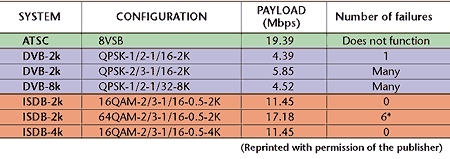

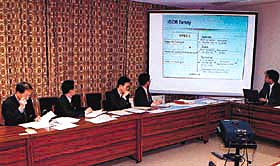
 Address
of President EBISAWA
Address
of President EBISAWA  Engineering
Committee
Engineering
Committee